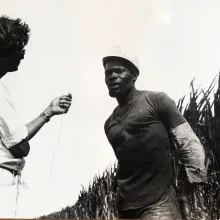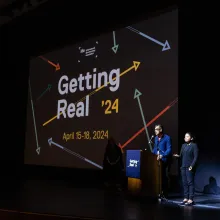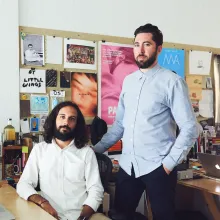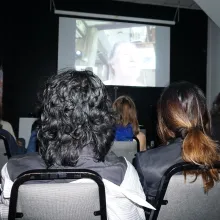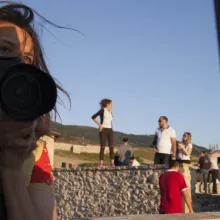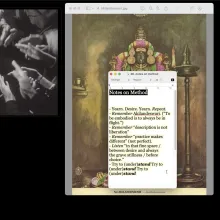Imagine the hallways of Cornell University, a quiet, comfortable campus in upstate New York, in the mid-1970s. Now imagine, in one of the Ivy League rooms, a Marxist reading group that brings together students and professors from different generations, ethnicities, and countries. They are united by an urgency to make revolutionary art and contribute to the dismantling of imperialist capitalism. This is the origin story of the Victor Jara Collective, a coalition of artists and activists named after the revolutionary Chilean musician assassinated during the Pinochet regime.
Latest Posts
During the closing remarks at the Getting Real '24 conference on April 18, IDA's Executive Director Dominic Asmall Wilssdon announced the new collaboration between Sheffield DocFest and the International Documentary Association (IDA) for the Alternate Realities Exhibition and Summit during the 31st edition of Sheffield DocFest taking place 12 - 17 June 2024. An international collaboration supported using public funding by the National Lottery through Arts Council England.
There’s a scrappiness behind Memory’s sleek exterior and dedicated cult following. The L.A.-based production company has only two full-time employees: its founders Sebastian Pardo and Riel Roch-Decter. The duo sought to create both a low-budget dream factory for passion projects and a sustainable network of filmmakers working in the DIY ethos of the 2000s, but with the stylistic inclinations of tidier, higher-budget productions.
In these first couple of months as IDA’s executive director, a few lines by the cultural thinker Paul Gilroy have been on my mind. They indicate, for me, something of the purpose of documentary filmmaking.
This print issue of Documentary comes right before IDA’s biennial industry conference, Getting Real. In the tradition of past magazine issues that immediately precede the conference, this issue previews the conference’s themes of “Strategy, Networks, Access” through interviews with speakers whose work will be featured at the conference.
Millennium Film Workshop is a cinema and gallery space dedicated to showcasing avant-garde, experimental, and noncommercial films and moving images. Since its opening in 1966, Millenium has aimed to show and support all filmmakers, from beginners to professionals. This has been accomplished under the program’s five main tenets: the personal film focus, equipment access, workshop programs, the Millennium gallery space, and the Millennium Film Journal . After years of operating as a nomadic organization throughout New York City, in June 2022, Millennium Film Workshop opened a new space on Wilson
The Center for Asian American Media (CAAM) announced the launch of the Building Bridges Documentary Fund at IDA's Getting Real '24 conference on April 18, 2024, at the Japanese American National Museum Tateuchi Democracy Forum. This pioneering initiative, generously funded by the Doris Duke Foundation, is designed to support and elevate the voices of Muslim filmmakers across the United States, promoting a deeper understanding of the Muslim experience through the powerful medium of documentary film. Applications for the 2024 Building Bridges Documentary Fund are open now through June 17, 2024.
Kirsten Johnson has been a cinematographer and director since the 1980s. Her acclaimed films as a director include The Above (short, 2015) , Cameraperson (2016) , and Dick Johnson Is Dead (2020), all of which grapple with the meaning behind making images, their utility in conveying reality, and the strength of documentary images as visual evidence. For this interview, Documentary asked longtime archival producer and producer Stephanie Jenkins ( Muhammad Ali , 2021) to catch up with Johnson via Zoom. As a co-founder of the newly formed Archival Producers Alliance, whose other organizers are
Over the years, Jemma Desai’s writing, programming, research, and practice have intersected with institutional critique. Through investigating film institutions’ languages of colonialism, she’s brought renewed attention to hierarchies, systems, words, and ways of relating that are often taken for granted. Born out of a combination of rigorous research, firsthand experience working in institutions such as the British Council and the BFI, as well as testimonies by other arts workers, This Work Isn’t for Us (first self-published in 2020) was a crucially timely study of the fundamental problems
An interview with two organizers of the Archival Producers Alliance on how AI will shake up the nature of archival footage For the first decades of this century there was, relatively speaking, intermittent media coverage of Artificial Intelligence or how deep learning and related technologies were creeping into aspects of work, culture, and society. But then in late 2022, OpenAI released the large language model ChatGPT to the public—and stories about AI exploded. Subsequently, the coverage around AI in the last year or so has reached a point of fatigue, even satire: “It’s AI” has become a
